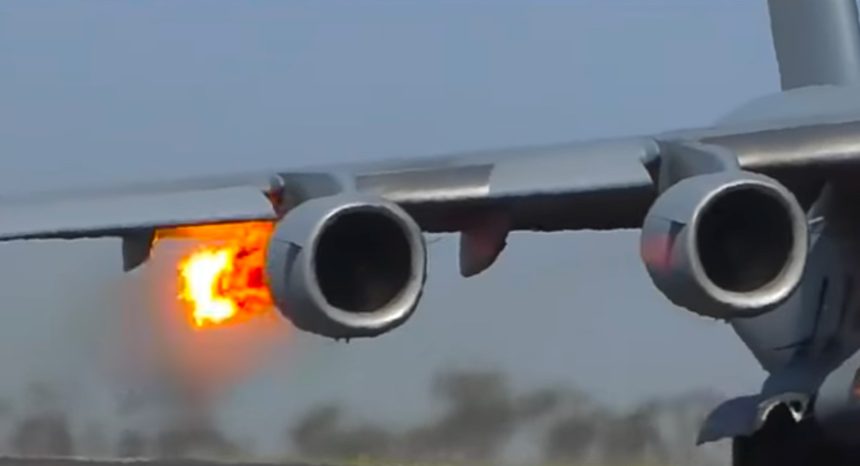Birdstrike caught on video.
The stunning video below was filmed during Avalon Airshow, Avalon, Australia, and shows a USAF Boeing C-17 Globemaster III experiencing a birdstrike. The airlifter was on its take off roll for its aerial display when an big bird was ingested by the engine. According to HD Melbourne Aviation who filmed the incident, Avalon Airport is notorious for having hawks gliding and hanging around the runways. Indeed, one of them can be seen got sucked into the engine with a consequent fireball and loud bang, the typical behaviour of a compressor stall.
The C-17 aborted its take off and came to a stop on the runway before being taxied to a hangar for inspection. Since it did not fly on the following day, it is possible the damage was significant or required more details inspections.
Anyway, as already reported here at The Aviationist, birds ingested in aircraft engines can have devastating effects.
We have often commented videos of photographs of jets suffering compressor stalls. Compressor stalls (sometimes referred to as afterburner stalls in aircraft with reheat) are not too rare among military aircraft. They can be caused by several factors, including birdstrikes, FOD (Foreign Object Damage), ingestion of turbulent, hot airflow or smoke into the air intake etc.
A compressor stall is a local disruption of the airflow in the compressor whose severity may vary from a momentary power drop to a complete loss of compression. It can be divided into two categories:
- Compressor surge: all the rotor blade blades “lose” (i.e. the airfoil stalls like an airplane wing) the airflow at the same time, then get it again, then lose it again, etc.
- Rotating stall : only a few blades on the annulus “lose” the airflow, and you get some kind of stalled pockets (you can have several of them) which rotates with a different velocity than the rotor (and in the opposite direction). Usually, you go to rotating stall then to full stall (or surge).
For instance, a compressor surge also occurs when the hot vapour generated by the aircraft carrier’s catapult is ingested by the aircraft air intake thus creating a breakdown in compression resulting in a the compressor’s inability to absorb the momentary disturbance and to continue pushing the air against the already-compressed air behind it. As a consequence, there’s a momentary reversal of air flow and a violent expulsion of previously compressed air out through the engine intake producing some loud bangs from the engine and “back fires”.









